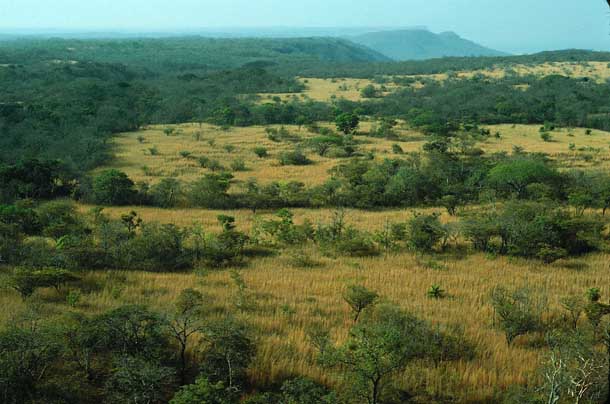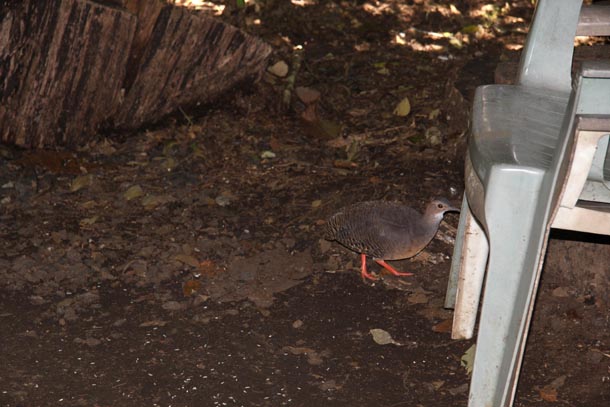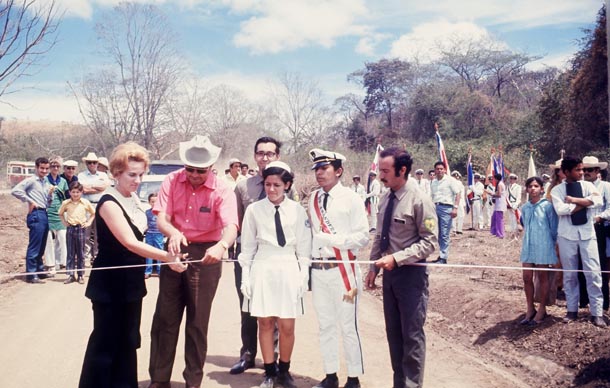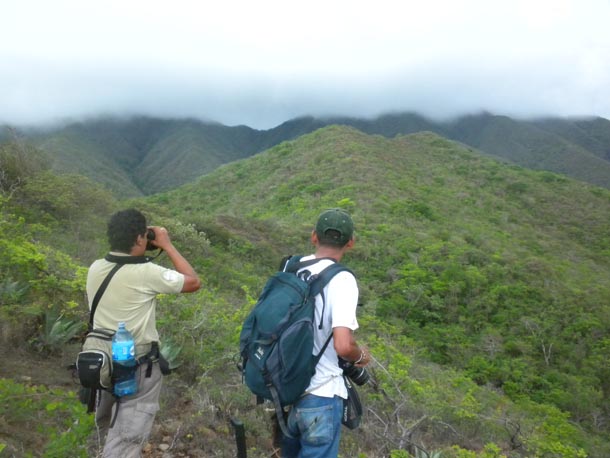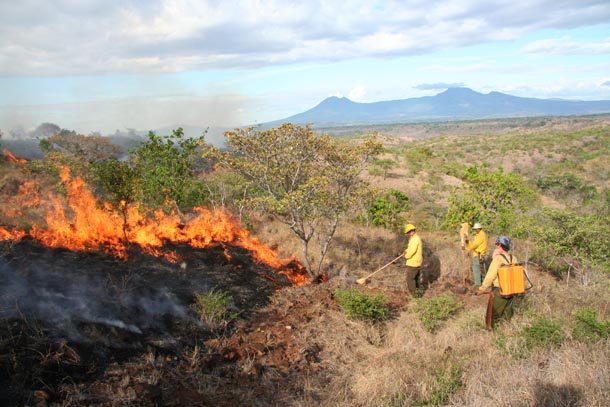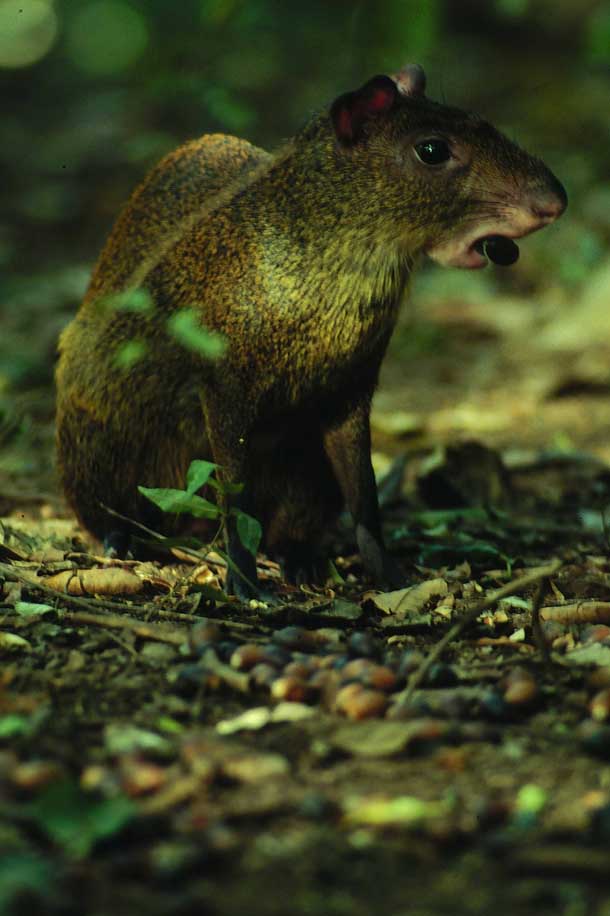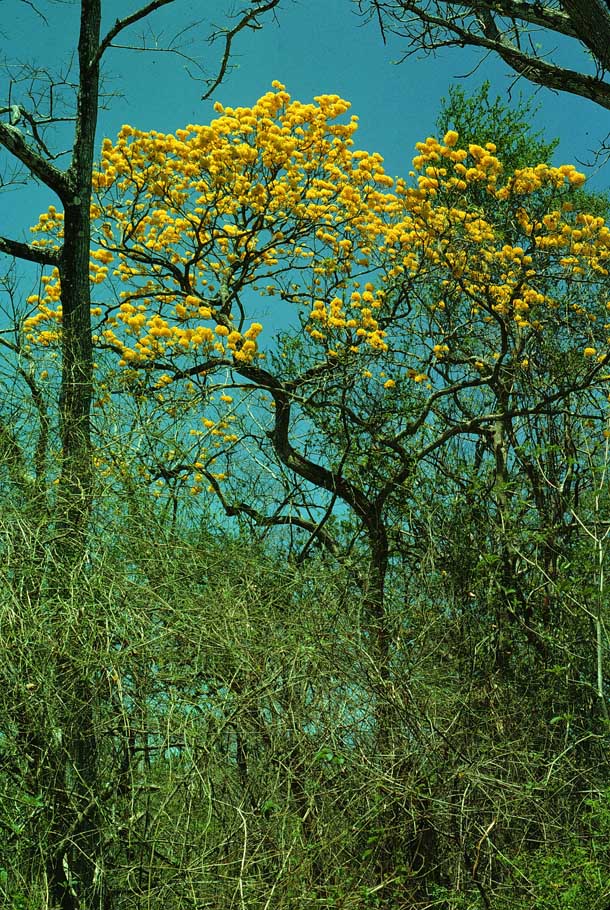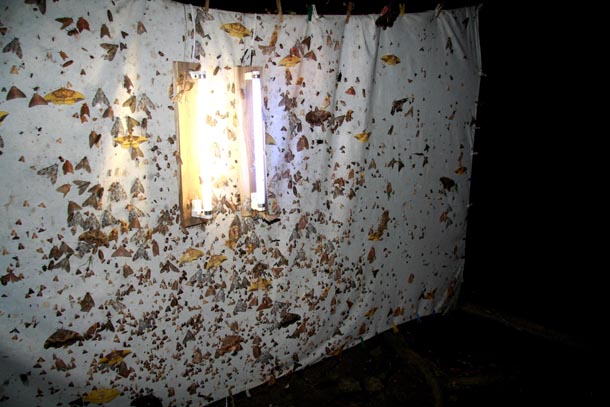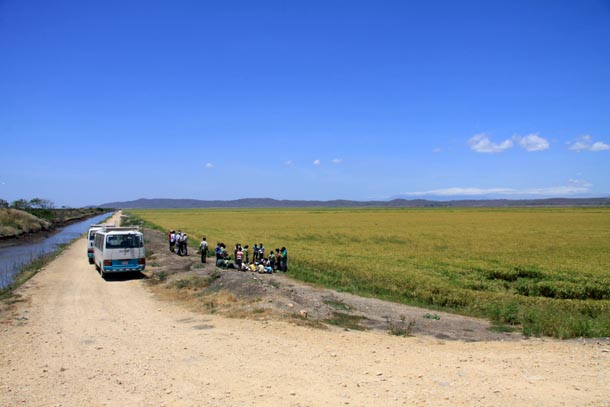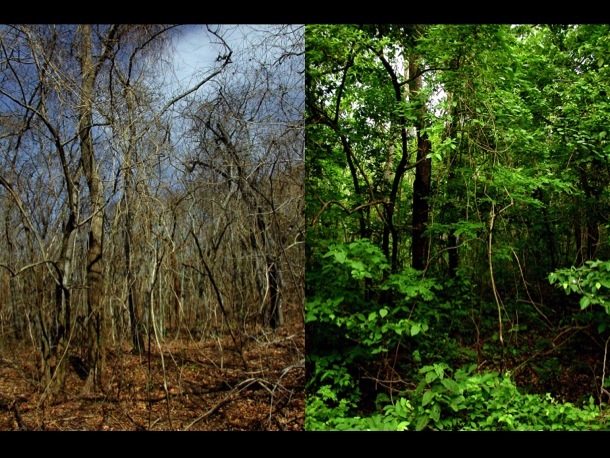
ACG dry forest is on the Pacific side, in the rain shadow of the volcanoes. It is characterized by about 5.5 essentially rain-free months (late December to mid-May). This is followed by two quite heavy rainy periods: May-July and September-October. Between 1200 and 2900 mm of rain may fall in this period, with as much as a third of that rain falling in a 2-3 week span if there is a hurricane in the Pacific or a tropical storm blowing in from the Caribbean.
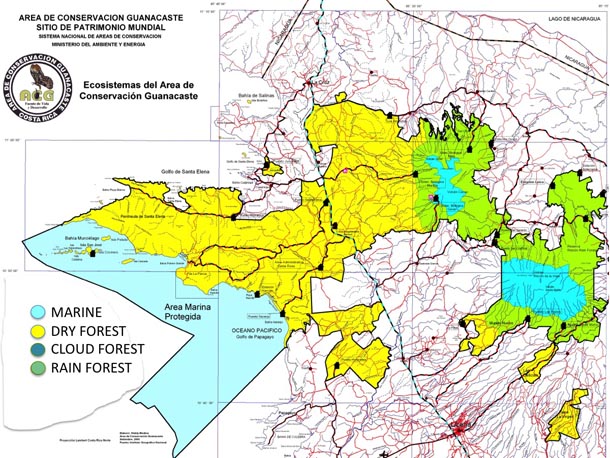
However, the neatly defined and quite predictable long dry (rain-free) season (with perhaps 1-2 heat-induced rains in mid-March), followed by a long rainy season of four distinct intensities, is a thing of the past. The last two decades of climate change are strongly impacting this part of Costa Rica, generating drier, warmer, and much more blurry and irregular seasonal changes. This is, in general, resulting in the dry forest biota expanding to the north and east, and lesser seasonal invasion of the dry forest by so-called rain forest species during the rainy season. For example, the trademark dry forest tinamou (Crypturellus cinnamomeus) is now being heard in the rain forest at Estación Pitilla and Estación San Gerardo and even Estación Cacao in the early dry season, and the rain forest arboreal lizard Anolis biporcatus no longer lives in Bosque Humedo dry forest in Sector Santa Rosa.
Equally complex, the detailed pattern of rainfall, temperature, soil type and age since the last anthropogenic perturbation (and of what kind) generates many subcategories of ACG dry forest, but how to name and group/parse these depends much on the desires of the user of the resulting names, something for a book-sized review and many more decades of study.
Most briefly, the dry forest vegetation becomes largely deciduous during the dry season, but there are two major sources of heterogeneity. First, there are numerous species that are either literally evergreen and leafy all year (e.g., Ocotea veraguensis in the avocado family, Lauraceae), or hold their leaves for 11.5 months, and abruptly shed and replace them; this gives the illusion of their being evergreen (e.g., Hymenaea courbaril the fossil resin of which is commercial New World amber, and Manilkara chicle, the white gum from which was the original base for chewing gum). Second, the ACG old-growth dry forest canopy has a large number of individuals of such evergreen species (about 40). However, when the forest is cut, the evergreens are largely eliminated (and take decades to centuries to return), and the resulting secondary dry forest is mostly composed of dry-season deciduous species. Costa Rican old growth dry forest has been thoroughly logged and burned to near extinction, with the result that “common knowledge” is that of a forest very different from intact/original dry forest. In fact, the first Costa Rican dry forest to be mapped in detail and held up as the prototype Guanacaste dry forest by the ivory tower academic community is the center of Bosque San Emilio in Sector Santa Rosa — which was a banana plantation in 1920, a fact “discovered” in the 1980s by the novel idea of asking a resident Costa Rican, Lupo Espinoza, what might be the conspicuous ditches bordering the inside margin of this forest. They were deep ditches dug to keep free-ranging pigs (and wild peccaries?) out of the bananas.
The seminal Costa Rican dry forest Parque Nacional Santa Rosa (PNSR) was established in 1971 to honor Costa Rica’s wars and to protect fragments of secondary successional dry forest, intermingled with large areas of frequently burned ancient pastures, which were mistakenly viewed as “savanna” by people largely unaware that their grass was/is introduced African pasture grasses. The core problem is that owing to the relative friendliness of dry forest to indigenous people and invasive frontier farmers and colonists, its ecosystem was largely destroyed in the Mesoamerican tropics, first by indigenous cultures (all of the Yucatan Peninsula and the Peten was cornfield at one time or another), and then by European farming, ranching, logging, burning and hunting. By 1985, this problem had reached the level that less than 0.02% of Mesoamerican dry forest was intact and had some kind of protected status. This in turn was the stimulus to form ACG as a gigantic dry forest restoration project from the seed provided by the heavily damaged 10,000 ha terrestrial PNSR.
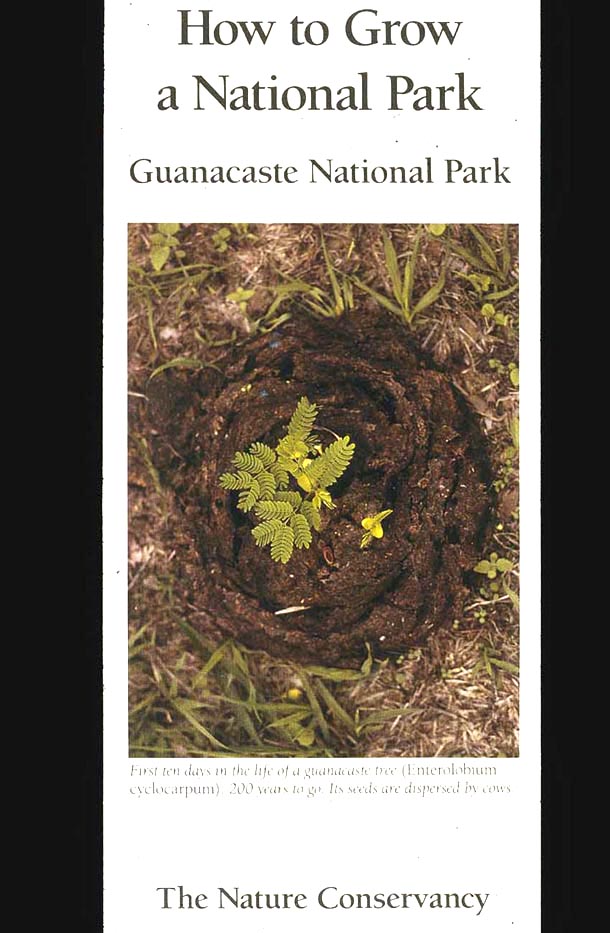
In 1985-86, as is of course still the case, the only readily accessible old-growth dry forest in Sector Santa Rosa (PNSR) was the ~22 ha Bosque Humedo, the northern corner of which is crossed by the paved Sector Santa Rosa entrance road from the Interamerican Highway to the Area Administrativa. This is the only relatively intact old growth dry forest on a paved road from Mazatlan, Mexico to the Panama Canal. It is striking for having at least 70%+ of its canopy constituted of about 10 “evergreen” species of trees (Hymenaea courbaril, Manilkara chicle, Swartzia cubensis, Inga vera, Ehrblichia odorata, Sideroxylon capiri, Ocotea veraguensis, Quercus oleoides, Ficus obtusifolia., etc.), with 100+ species of dry season-deciduous trees as low density individuals, which become temporarily very abundant when the forest is cleared and allowed to regenerate.
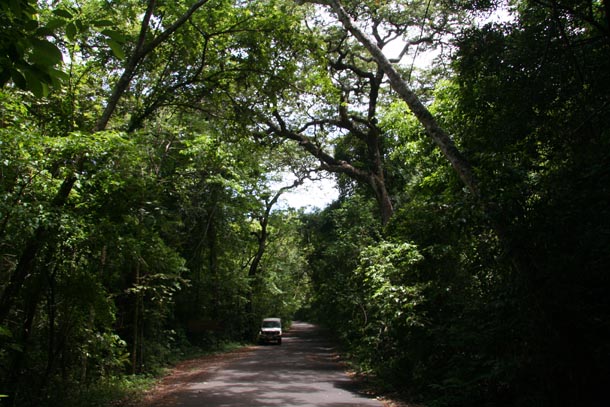
There is another ~3,000 ha area of essentially old growth and very dwarfed serpentine-based dry forest at the most western end of the Peninsula Santa Elena.
The first challenge in the 1985-1986 beginning was to stop the anthropogenic dry season fires that annually swept through ACG, and were especially damaging once the cattle had been removed (cattle are biotic mowing machines) as the uneaten grass fuel load became enormous.
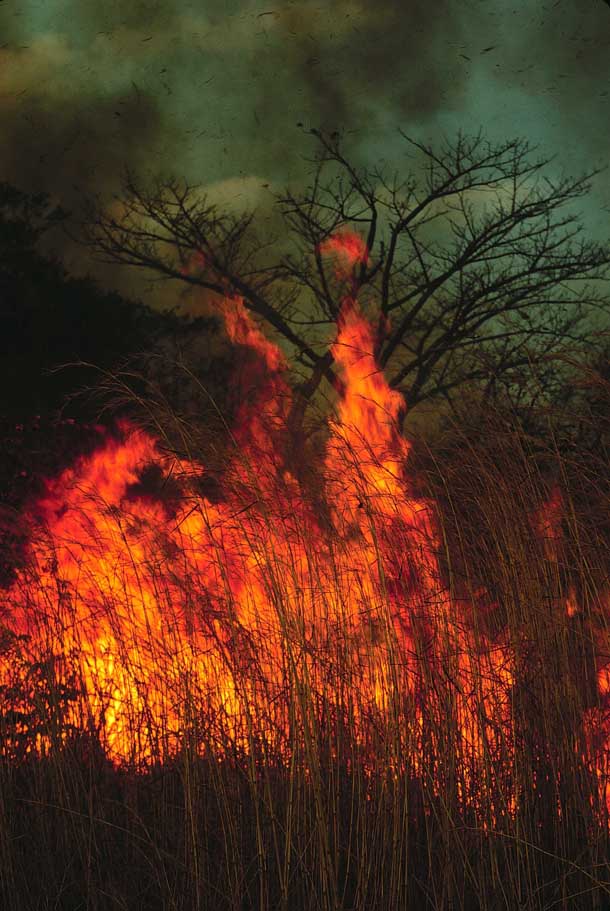
ACG dry forest itself does not burn, but the heat from grass fires kills the woody vegetation, and the next year it becomes fuel, as well as letting in more sunlight, which in turn generates more dry-season-flammable herbaceous vegetation. With many tens of thousands of hectares of old pastures, abandoned fields and trashy scrub to coax back into being a growing forest, it was obvious that the millions of young trees required would not come from growing seedlings. Equally, there was essentially no example to follow in what to plant where and when. The conclusion was, and it worked well, “stop the fires, logging, and hunting, and simply let nature take back its original terrain.”
With this protocol in place, the expenditure shifted from the romanticism of planting trees to stimulating an effective anti-perturbation staff, and recognizing that thousands of species take part in the dry forest restoration process, making them very valuable quite irrespective of whether they are charismatic, threatened with extinction, of economic (to humans) value, big or small. They play by their own rules and fill their own gas tanks with the sun and the rain. And it has worked. They are taking back their homeland. ACG contains now at least 60,000 ha of regenerating dry forest, all seeded by nature from the fragments of forest left in corners, ravines, cliff faces, streamsides, and places too moist to burn.
The ACG dry forest ecosystem is a mosaic and swirl of many traits generally not found in ACG cloud forest or rain forest. A few of them, in no particular order, because they all interdigitate and vary in importance from hectare to hectare:
1. The animals and plants are generally environmentally tough, resistant to desiccation and intense sun, and a bit less dependent on complex species-species interactions than are rain forest species.
2. Populations display wild swings in abundance, between and within years, and from place to place.
3. Seasonal movements and even migrations are commonplace among many animal species.
4. There are many wind-dispersed species of plants, noticeably many more than in the adjacent rain and cloud forests.
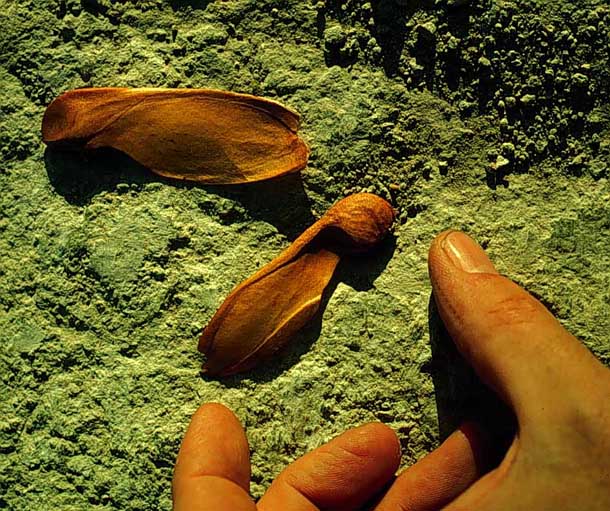
5. Many species of woody plants flower during the dry season, or just at the beginning of the rainy season.
6. For any given taxonomic group, the number of species is 50-80% lower than for the same taxon in the adjacent rain forest.
7. Litter is deposited heavily without decomposition throughout the dry season, and then when the rains begin, steadily decomposes (in accordance with the amount of rain) down to almost none by the end of a full rainy season; this litter cycle is dramatically different from the relatively steady litter input and steady decomposition in the rain forest and cloud forest.
8. Watercourses are seasonally intermittent (unless fed by the ACG cloud forest year around), but in some cases, springs and waterholes provide water throughout the dry season.
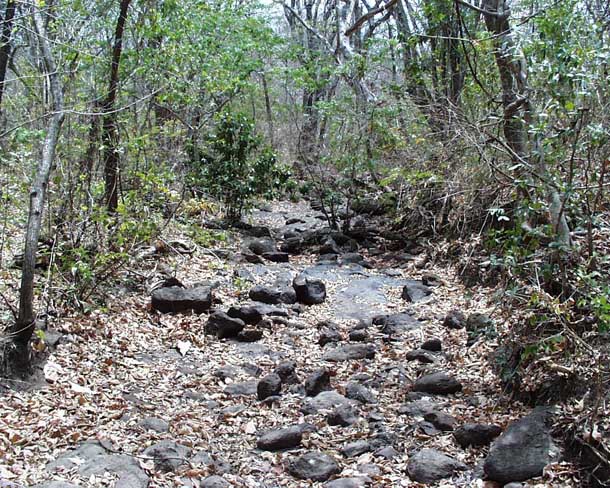
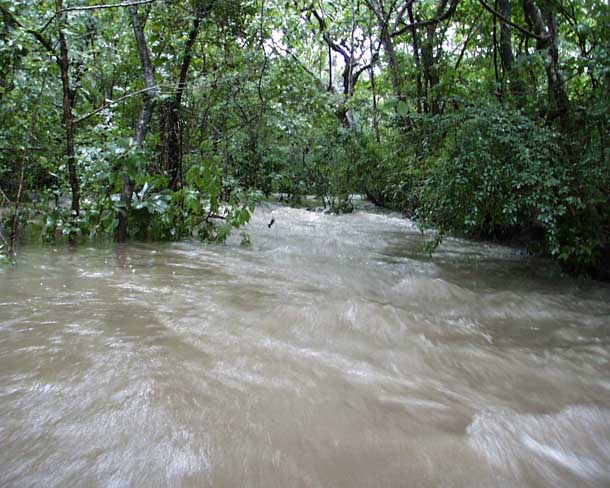
9. For flower- and seed-feeding insects, birds and small mammals, the dry season is the “good” time of year and the rainy season a time of starvation.
10. The enormous pulse of insect biomass and reproductive events in the first month of the rainy season has many complex causes, and then gradually declines as the rainy season continues to its end; many species migrate out long before the end of the rainy season, presumably because of the build-up of predators and parasites on the early rainy season pulse of reproduction.
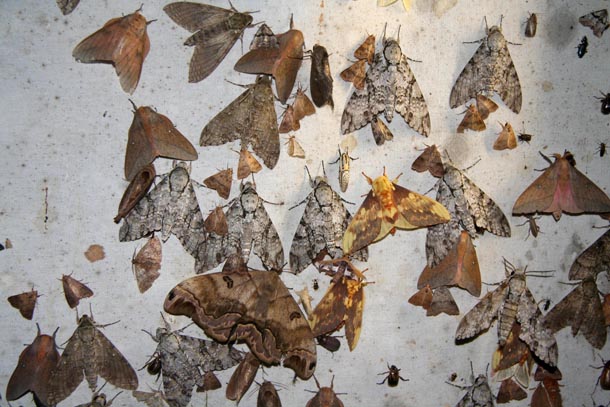
11. Indigenous and European invasive colonists found the tropical dry forest to be more “friendly” than cloud and rain forest because of greater ease of movement and transport, better food storage conditions, fewer diseases and pests, better soils for crops, closer proximity to a more resource-rich coasts, and vegetation comparatively more edible to domestic animals. For these reasons, tropical dry forest has generally been eliminated much more thoroughly the world over than has been lowland rain forest.
